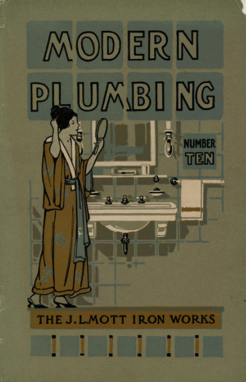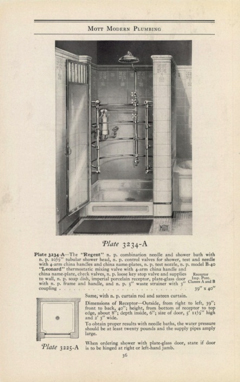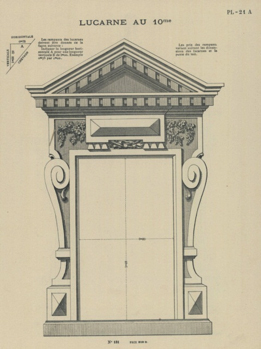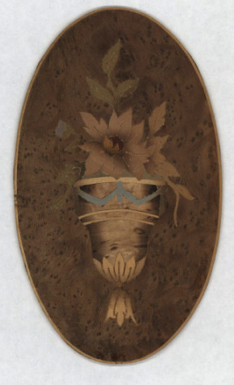Barbara Opar and Barret Havens, column editors
Column written by Rose Orcutt, Architecture Librarian, University of Buffalo
At the University at Buffalo, undergraduates and graduate students in the School of Architecture & Planning often inquire about “reading lists” that can provide an introduction/overview to various theories, typologies, and architectural influences covered in their classes.
I consulted with seven of my architecture faculty, including the Dean of Architecture, and from them I received a number of responses and suggestions, including reading lists from Princeton and Yale. This exchange developed into discussions on the demand for other architecture related reading lists. Based on popular assignments and students’ research interests, we are creating lists on the history of Buffalo and Western New York, gender/identity in architecture, a faculty publication list, and a UB architecture and planning research centers’ reading list.
The first list compiled is made up of resources considered to be the ‘classics’ in architecture based on the Princeton, Yale, and UB architecture faculty suggestions. This list is not a static document, but updated routinely though my Blog at http://libweb.lib.buffalo.edu/blog/architecture/?page_id=1188 . Resources are arranged by years published, rather than topics, because the subjects are too varied, thus making the list unmanageable. The American Planning Association has a similar list (arranged by decades) for their top 100 essential planning books at http://planning.org/centennial/greatbooks/ . A Pinterest page http://www.pinterest.com/ublibraries/architecture-reading-list/, developed by a library school graduate student, also highlights the classic resources. Both the Pinterest site and the blog provide direct links to the UB Library catalog record, so students can quickly refer to the resource.
2000s:
Allen, S., & Agrest, D. (2000). Practice: architecture, technique, and representation. Australia: G+B Arts International.
Balmond, C., Smith, J., & Brensing, C. (2002). Informal. Munich ; New York: Prestel.
Bergdoll, B. (2000). European architecture 1750-1890. New York: Oxford University Press.
Colquhoun, A. (2002). Modern architecture. Oxford: Oxford University Press.
Eisenman, P. (2004). Eisenman inside out: Selected writings, 1963-1988. New Haven, CT: Yale University Press.
Foreign Office Architects., & Institute of Contemporary Arts (London, E. (2003). Phylogenesis: Foa’s ark. Barcelona: Actar.
Forty, A. (2000). Words and buildings: A vocabulary of modern architecture. New York, N.Y.: Thames & Hudson.
LeGates, R. T., & Stout, F. (2003). The city reader. London: New York.
Reiser, J., & Umemoto, N. (2006). Atlas of novel tectonics. New York: Princeton Architectural Press.
Smithson, A. M., & Smithson, P. (2001). The charged void–architecture. New York: Monacelli Press.
1990s:
Allen, S. (1999). Points + lines: Diagrams and projects for the city. New York: Princeton Architectural Press.
Blaser, W. (1997). Mies van der Rohe. Basel ; Boston: Birkhauser Verlag.
Boyer, M. C. (1996). The city of collective memory: Its historical imagery and architectural entertainments. Cambridge, Mass.: MIT Press.
Corner, J. (1999). Recovering landscape: Essays in contemporary landscape architecture. New York: Princeton Architectural Press.
Eisenman, P. (1999). Diagram diaries. New York: Universe.
Evans, R. (1997). Translations from drawing to building and other essays. Cambridge, Mass.: MIT Press.
Hays, K. M. (1998). Architecture theory since 1968. Cambridge, Mass: The MIT Press.
Hays, K. M. (1998). Oppositions reader: Selected readings from a journal for ideas and criticism in architecture, 1973-1984. New York: Princeton Architectural Press.
Jackson, J. B. (1994). A sense of place, a sense of time. New Haven: Yale University Press.
Koolhaas, R. (1994). Delirious New York: A retroactive manifesto for Manhattan. New York: Monacelli Press.
Koolhaas, R., Mau, B., Sigler, J., Werlemann, H., & Office for Metropolitan Architecture. (1998). Small, medium, large, extra-large: Office for Metropolitan Architecture, Rem Koolhaas, and Bruce Mau. New York, N.Y.: Monacelli Press.
Lynn, G. (1998). Folds, bodies & blobs : collected essays. [Bruxelles]: La Lettre volée.
Schneider, U., Feustel, M., Suermondt-Ludwig-Museum Aachen., & Kunstcentrum deSingel (Antwerp, B. (1999). Toyo Ito: Blurring architecture. Milan: Charta.
Venturi, R., Museum of Modern Art (New York, N., & Graham Foundation for Advanced Studies in the Fine Arts. (1990). Complexity and contradiction in architecture. New York : New York: Museum of Modern Art in association with the Graham Foundation for Advanced Studies in the Fine Arts, Chicago.
1980s:
Banham, R. (1980). Theory and design in the first machine age. Cambridge, Mass.: MIT Press.
Foster, H. (1983). The Anti-aesthetic: Essays on postmodern culture. Port Townsend, Wash.: Bay Press.
Kern, S. (1983). The culture of time and space 1880-1918. Cambridge, Mass.: Harvard University Press.
Krauss, R. E. (1985). The originality of the avant-garde and other modernist myths. Cambridge, Mass.: MIT Press.
Libeskind, D. (1981). Between zero and infinity: Selected projects in architecture. New York, NY: Rizzoli International Publications.
Le Corbusier. (1986). Towards a new architecture. New York: Dover Publications.
Lynch, K. (1984). Good city form. Cambridge, Mass.: MIT Press.
Rossi, A., & Eisenman, P. (1982). The architecture of the city. Cambridge, Mass.: MIT Press.
Rowe, C. (1982). The mathematics of the ideal villa, and other essays. Cambridge, Mass.: MIT Press.
Salvadori, M., Hooker, S., & Ragus, C. (1980). Why buildings stand up: The strength of architecture. New York: Norton.
1970s:
Conrads, U. (1971). Programs and manifestoes on 20th-century architecture. Cambridge, Mass.: MIT Press.
Tafuri, M. (1979). Architecture and utopia: Design and capitalist development. Cambridge, Mass.: MIT Press.
1960s:
Banham, R. (1969). The architecture of the well-tempered environment. [Chicago]: University of Chicago Press.
Giedion, S. (. (1967). Space, time and architecture: The growth of a new tradition. Cambridge: Harvard University Press.
Le Corbusier, Boesiger, W., & Girsberger, H. (1967). Le Corbusier, 1910-65. New York: Praeger.
1940s:
Giedion, S. (., & Library of Robert Duncan (State University of New York at Buffalo). (1948). Mechanization takes command, a contribution to anonymous history. New York: Oxford University Press.

 Study Architecture
Study Architecture  ProPEL
ProPEL 




